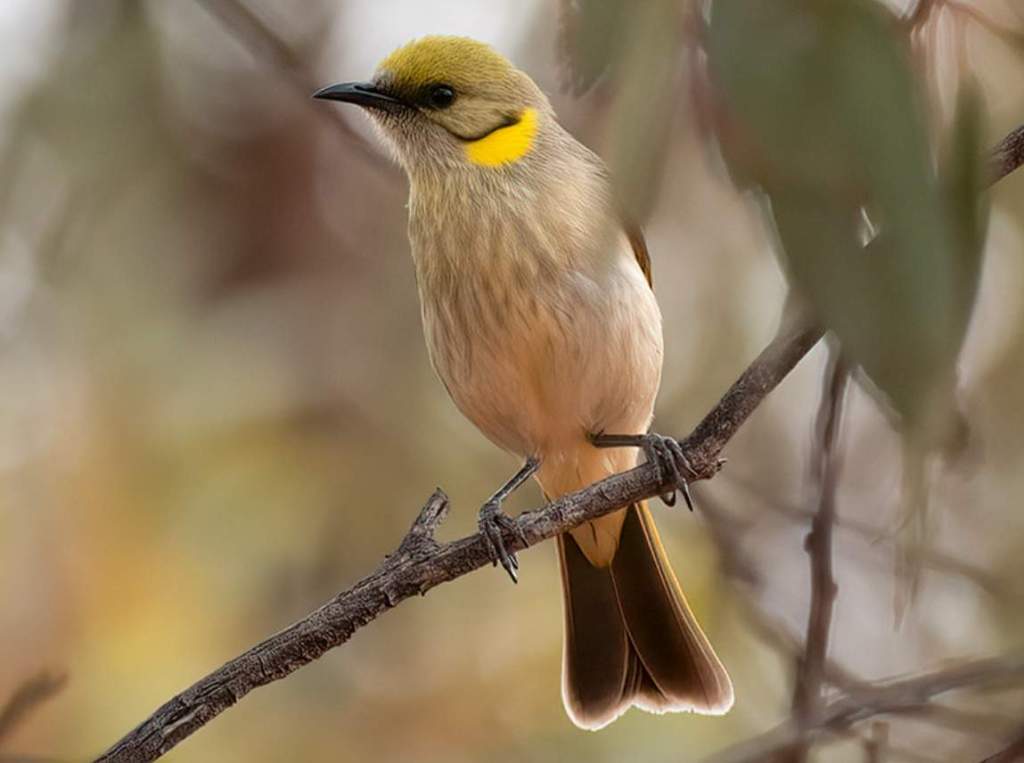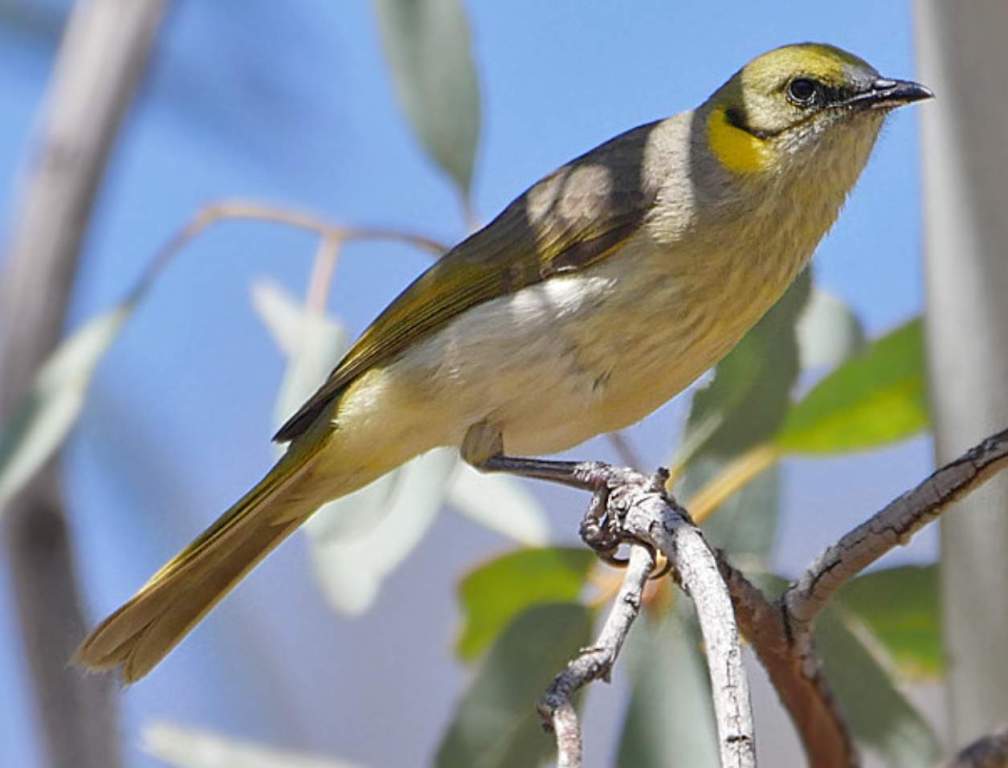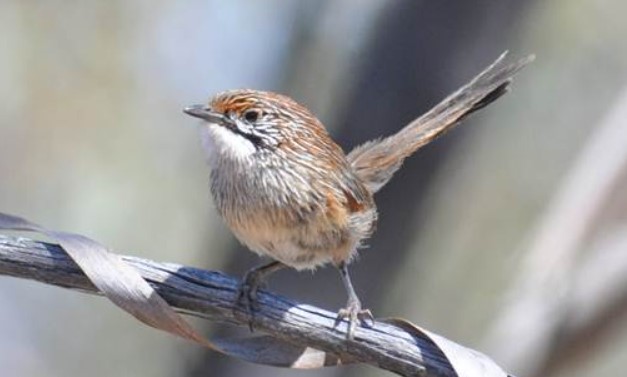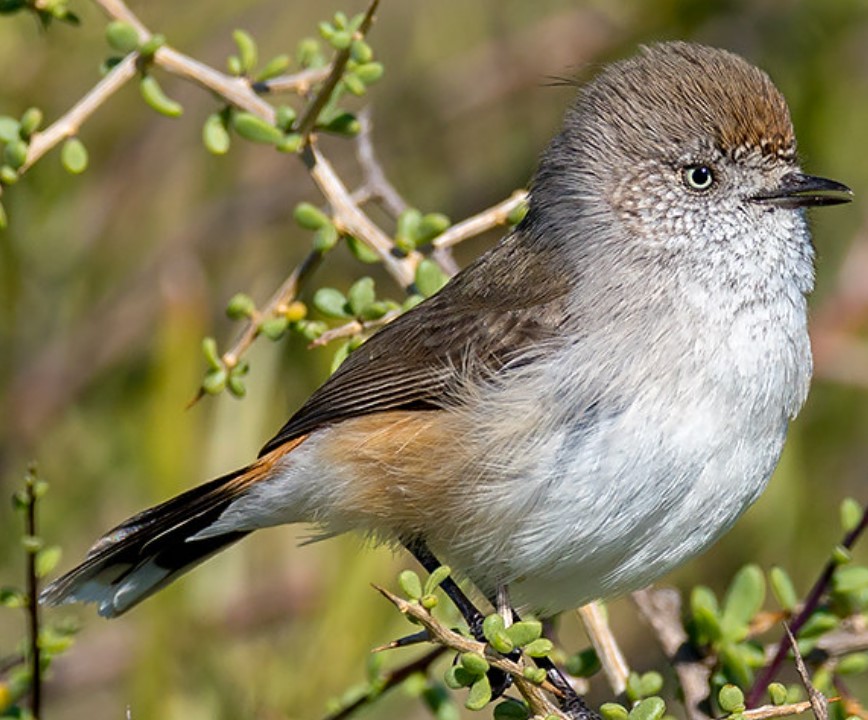Habitat: The grey-fronted honeyeater (Ptilotula plumula) replaces yellow-plumed honeyeaters (Ptilotula ornata) in stunted desert mallee and eucalypt woodland in a ring around arid Australia, both on low stony hills and spinifex-clad dunes. Where they overlap in the south. The grey-fronted honeyeater prefers bushier mallee regrowth.
Singly, in pairs or small groups of up to six to eight birds. Males advertise feeding and breeding territory by singing from vantage perches just under the canopy and in near-vertical song flights, calling loudly before suddenly diving back to cover. Nests are usually built in bushy mallees with near-upright twigs as supports. This type of nest building is unusual for honeyeaters. Both sexes attend to the young. But probably only females incubate.

Diet: They are locally nomadic and sometimes swarm on flushes of blossoming mallee taking both nectar and insects attracted to the flowers. Lerps and aphids also consume nectar and berries, which are gleaned from the upper foliage.
Identification: Both sexes are similar, but the male is larger. The upper parts, wings, and tail are mid-green-grey. The face is yellowish green with a narrow gray forehead. The lores are dusky, with a black streak below the ear and edges edged with a broad yellow plume. The underparts are cream-white, lightly streaked with faint gray. The eyes are brown. The bill is black. The feet are gray-horned. The immature bird is duller.
Vocalization: A grey-fronted honeyeater calls repeatedly when in contact. The song is rattled it-wt-wt-wt, from perch and in song-flight.
Nesting and breeding: Nesting and breeding occur in July–January, or after the rains. Nesting a small cup of fiber and bark bound with cobwebs, slung or often supported in an upright fork of bushy foliage, 1-3 meters up the ground
Eggs: Grey-fronted Honeyeater lays 2 to 3 eggs, pale pink, spouted red-brown at the larger end; oval, about 20 x 14 mm. It is estimated that females incubate for about 14–15 days.
Distribution: Grey-fronted honeyeater is found in bushy mallee and woodland on stony hills and dunes in arid zones.
Alternative Name: It is also known as the yellow-fronted honeyeater.
Size: The grey-fronted honeyeater is 150–160 mm long.
Taxonomy: In 1841, English ornithologist John Gould described the grey-fronted honeyeater as Lichenostomus plumulus. A molecular phylogenetic analysis published in 2011 affirmed Lichenostomus’ polyphyly, and it was shifted to Ptilotula.
Races: There are no races.
Family: Meliphagidae.
Order: Passeriformes
Genus: Ptilotula







